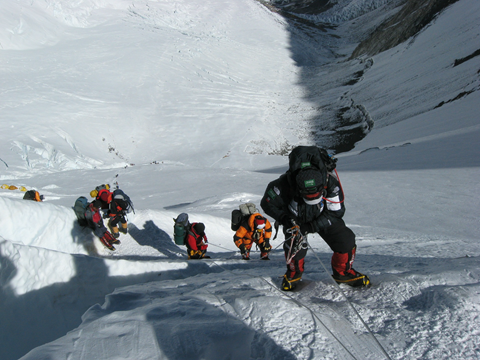The view from my window is of the eastern slope of the Wind River Range. The high country gleams white with snow. The lower slopes are green with spring, or white with snow, depending on the day, or sometimes the hour. My hike last weekend was a combination of snowshoeing in wet snow and slopping through mud, conditions ripe for a non-freezing cold injury such as immersion foot.
Most people don’t know this injury, because like I did last weekend, they go home at night. It’s the multi-day hikers, the soldiers and others who stay outdoors in wet and cold who are at risk.
In immersion foot, like frostbite, blood vessels constrict in response to cold and damp. In this case it’s cold enough to impair circulation, but not to freeze tissue. Cells are deprived of oxygen and nutrients. Nerves are especially sensitive, which accounts for the numbness, pins and needles sensations, itching and pain that often announce the injury.
In the field it’s common to see cool pale extremities, numbness or tingling, itching and mild swelling. It’s less common to see the textbook appearance of cold, swollen, numb, cyanotic and mottled skin, or the warm, swollen, red and painful skin that surprises the camper after they take their first warm shower.
There isn’t much we can do to treat this in the field. We need to recognize it, keep the foot dry and warm and go see the doctor. The pain can be awful and difficult to manage with medications. Severe cases result in tissue loss. Moderate cases can be painful and sensitive for weeks, months and even years.
We used to think sleeping with warm dry feet prevented injury, no matter how cold they were during the day. This is probably true in many cases, but I’ve seen immersion foot develop over a day and in a cold multi-hour river crossing. There must be individual susceptibility issues. As well, this day may be the tipping point after several days of exposure. An afternoon of lapsed attention that unravels days of diligent prevention.
Footwear isn’t a panacea, although today’s plastic boots are a godsend compared to the leather we used to wear. You can get a non-freezing cold injury from sweat-dampened socks, neoprene socks and other vapor barrier systems, as well as with supergaitors and snowpack boots. It happens to novices and experts, in summer and winter, in the deserts and mountains, and even in the jungle. It’s a consequence of how cool and damp your extremities are, no matter what you wear on your feet.
The adage that “cold injuries are a leadership challenge long before they are a medical problem” is certainly true. Prevention starts by looking at your feet, and the feet of those you lead. Don’t assume. This injury surprises people.
The prevention toolbox is deep with advice: wool or synthetic socks; keeping the body warm; massaging the feet twice a day; sleeping with dry and warm feet; drying wet socks against your skin; warming you feet during the day; keeping your feet out of water or mud as much as possible; watching carefully and reacting promptly if you experience numbness or tingling; keeping footwear loose to allow for circulation.
I’ve tried vapor barrier, and anti-perspirants for my sweaty feet, with mixed success. I’m partial to changing my socks in the middle of the day, which makes me look at my feet. They surprised me once years ago. I’m sure they can do it again. I don’t tolerate numb toes, and my threshold for dealing with cold toes is low. Changing my socks gives my students permission to do the same and shows that cold, damp socks is not a sign of toughness, rather, it’s a bad habit.
Take care
Tod


